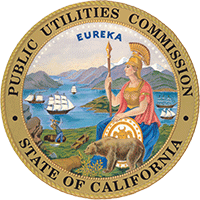Strategic Energy Management (SEM)
SEM was launched in 2018 (D.16-08-019). SEM involves holistic, long-term customer engagement while utilizing a whole-facility program approach. SEM encourages deeper customer relationship building, workshop/curriculum-based education, and creates multi-year, phased site level energy savings plans for customers to follow.
The standard SEM program includes three 2-year cycles and the CPUC has allowed it to be expanded to non-industrial market sectors including commercial, agriculture, and multi-family, if the current SEM guidebooks are followed. The completion of the CPUC ordered SEM Expansion Study (D.23-02-002), supports this expansion, while allowing application of the program savings parameters listed below.
In SEM, regression models and existing condition baselines are used to estimate savings from all program activities at a customer facility. SEM activities include capital projects, behavioral, retro-commissioning, operational (BRO) measures, and promotes customer knowledge of integrating demand side management (IDSM) measures.
If the prescribed program design and guidebooks are followed, eligible project savings will be based on:
- Net-to-Gross Ratio of 1
- Existing Conditions Baseline
- 5-year Effective Useful Life (EUL)
How SEM Works, visually:

IOU/PA Links:
PGE: Energy-Saving Programs (pge.com)
SCE: Third-Party Energy Efficiency Programs (sce.com)
SDG&E: Main Business Savings Center Landing page | San Diego Gas & Electric (sdge.com)
SoCalGas: Energy Savings | SoCalGas
MCE: MCE's AIR and Strategic Energy Management Programs (mcecleanenergy.org)
Guidance Documents:
California SEM Design Guide For: Cycle 1, 2, and 3
Implementation Plan (IP) Template
SEM Custom Project Guidance Memo
Project Feasibility Study (PFS) Form: SEM-Custom projects must submit a PFS for Custom Project Review (CPR)
Past Workshops:
November 8th, 2023 – Strategic Energy Management Expansion Study
April 24th, 2024 - Strategic Energy Management Report and Expansion Study
- SEM PY 21-22 Evaluation Slide Deck
- SEM/CPUC Public Expansion Study Slide Deck
- Strategic Energy Management Expansion Study
April 30th, 2025 – Strategic Energy Management Impact Report
- Group D SEM PY2023 Evaluation Slide Deck
- Group D Evaluation, Measurement, and Verification of Program Year 2023 Strategic Energy Management Projects Report
